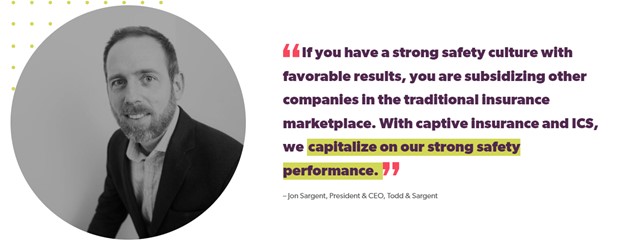
I recently heard a statistic that over 50 percent of property casualty premiums are directed toward some sort of captive insurance structure. If you break that down further, group captives represent a majority of the insureds using this growing percentage within the property casualty marketplace. Now, if this captive term sounds a bit foreign to you, you may be asking “what is a group captive?”
What Is a Group Captive?
Simply put, a captive is a group of companies that come together to form an insurance company. Group captives are typically designed to insure workers’ compensation, general liability, and automobile exposures.
A Rise in Property Casualty Group Captives
At Holmes Murphy, we continue to see an increase in the popularity of group captives. What’s driving this? The answer — growing frustration with the hard market.
In fact, the Council of Insurance Agents and Brokers Q4 P/C Market Survey highlighted that Quarter 4 of 2021 was the 17th consecutive quarter of overall rate increases at an average of an 8.7 percent rate increase. That makes evaluating alternatives and forming your own insurance company “captivating” right?! If you said yes, you’re not alone.
But here’s the thing — not all companies who qualify are a fit. I’ll get into that in a minute, but first, let’s look at the benefits.
Group Captive Benefits
Captive insurance allows you to take back control over an increasing business expense. Instead of “rolling the dice” with traditional insurance from year to year, a group captive provides long-term stability and the opportunity to drive down your costs.
There are many benefits of captive insurance, but the three main advantages are control, stability, and opportunity.
Control
Captive insurance gives employers ownership over one of their largest business expenses. In the traditional insurance market, you are in a pool, sharing risk with other companies. You are just unaware of who you are sharing risk with and how much. Captive insurance handpicks best-in-class companies, providing you a cleaner pool of like-minded employers.
By joining a group captive and partnering with like-minded employers, a community is created. Sharing best practices, learning from others, and navigating your businesses together are all additional benefits of joining a group captive.
Captive members are involved in the claim handling policies and procedures, allowing them greater influence, transparency, and communication. The traditional insurance companies no longer call the shots — captive members have the control.
Stability
Captive insurance is a long-term business strategy. When joining a group captive, members are insulated from market volatility, keeping premiums more consistent and stable. Group captive insurance members have the ability to benefit in their positive claims performance years, yet have stability in those years where “bad luck” and tough claims inevitably occur.
By being part of a cleaner pool and sharing risk with other companies, employers can achieve a greater spread of risk, greater credibility, and predictability over traditional insurance.
Opportunity
There are numerous opportunities to better your business. Captives allow for underwriting profit, making a company’s insurance strategy an opportunity vs. an expense. In addition to the financial return, businesses with group captive insurance improve company culture by enhancing engagement, workplace safety, and/or health and wellness initiatives.
Are You Captive Ready?
As I mentioned earlier, a captive isn’t right for every business and not just anyone can qualify. If you can check the boxes on the five areas below, we should talk. Your organization:
- Has a consistent focus and commitment to improving safety culture. Keeping your work environment safe makes your employees engaged and feel valued and secure, which can cut down on the number of incidents and claims. If this is something that’s a priority for you, your business will be a great fit for a Property Casualty group captive.
- Is paying over $200,000+ in workers’ compensation, general liability, and auto premiums combined.
- Has a privately held ownership structure. If you are a privately held company with an entrepreneurial spirit and a focus on the long-term success of your business, a captive could be a great fit.
- Desires control. When you join a Property Casualty group captive, you partner with business owners to accelerate the trajectory you’re on today and become a better company, giving you more control over your future success.
- Embraces “risk for reward.” Successful business owners understand that there is risk in every business decision they make. When you join a group captive, you take the controllable risk into your own hands, and in turn, the reward is much greater for your business.
How did you do? Ready to give me a call?
The Bottom Line
Member-owned group captives provide the stability, control, and opportunity that businesses desire within their insurance program. By partnering with like-minded companies, you can remove yourself from swings of the standard market, create a safer work environment, and see a return on your investment.
How much of a return? Over the last 15 years, our Holmes Murphy group captive clients have seen an average premium rate reduction of 40 percent with a 25 percent return on premium! That means our captive insurance members are driving down upfront costs and generating a return on a typically “sunk cost” line-item all while becoming safer, better companies. What’s not to love?
While I think group captives are a great strategy for the right client, it’s always great to hear what a client thinks:

If you’re interested in learning more about the captive insurance strategy, feel free to reach out to us. We’d love to talk with you!
